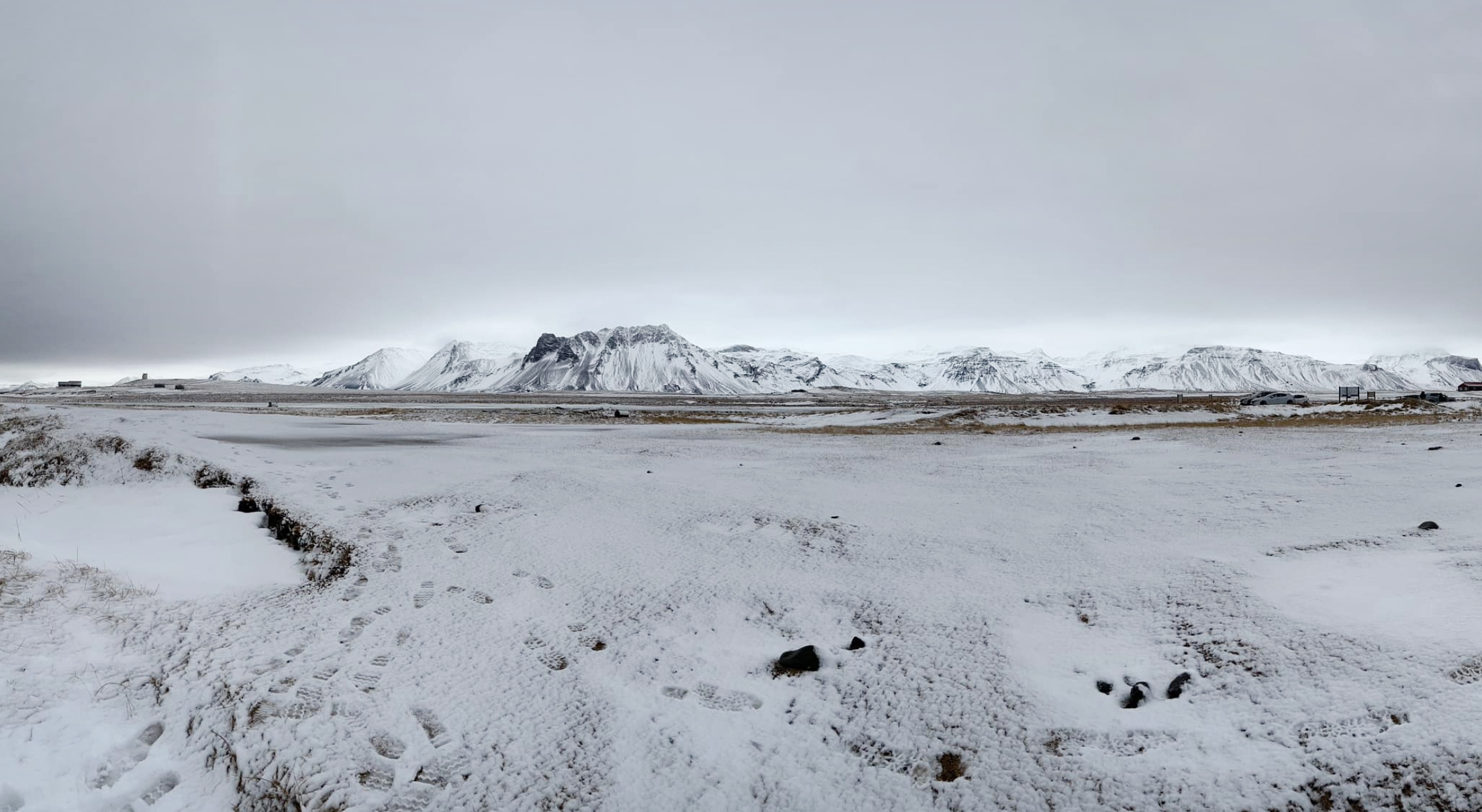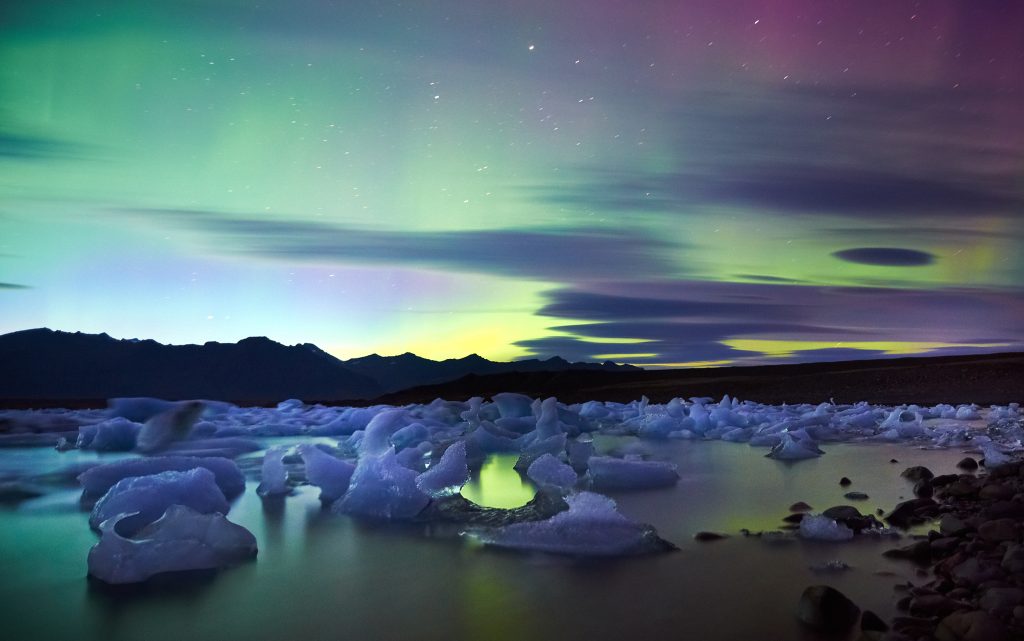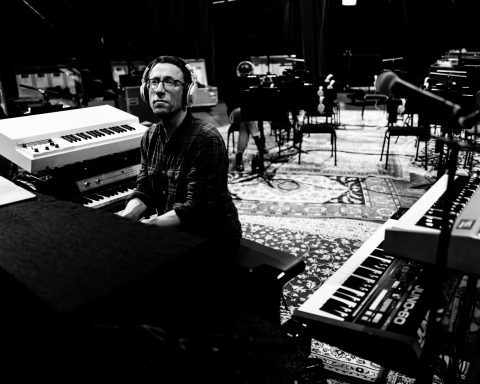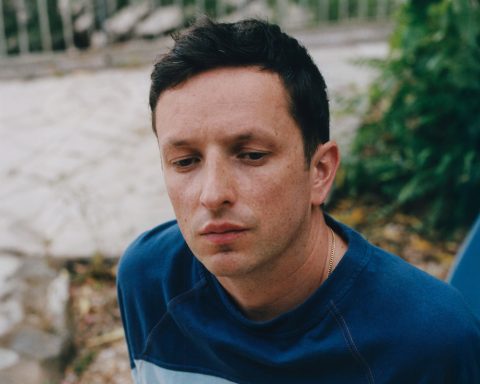I first visited Reykjavík, Iceland, on tour in 2019 and was completely inspired by the country’s intense beauty. Since then, I’ve built a network of artists, and in February 2023, I produced an event during the Reykjavík Winter Lights Festival at the venue Húrra. The event’s name, Upphljómun, is an Icelandic play on words combining enlightenment and resonance. My motivation was to showcase the art of live electronic music performance and the extraordinary talent in Iceland. To further share the energy of this magical place, I interviewed Orang Volante (Atli Már Þorvaldsson), ThizOne, Futuregrapher, r/s/nn, and Andartak. These artists offer unique perspectives on electronic music performance, Iceland, and more.

Orang Volante
As a composer, live performer, and DJ, which came first?
I started as a DJ playing in some teenage rock bands and began composing electronic music soon after. I bought my first synth—an Alpha Juno 2—from my guitar teacher, and my uncle lent me his TR-505. Soon after, my friend joined me with his D-50, and we did our first gig as an electro duo together.
What’s in your live setup?
My live setup today is a mixture of a sampler, sequencer, drum machine, and modular. Sometimes I have a vintage synth running pre-worked loops on the sampler through modular filters, and then I improvise on the other gear and my FX units.
What’s your relationship with Roland gear?
My relationship with Roland gear goes back to my beginning. I used a Roland amp for my guitar and still do. My studio has always had a lot of Roland gear. Through the years, I’ve worked with an Alpha Juno 2, D-50, TR-505, TR-808, TR-909, SH-101, SH-2, R-8, JUNO-106, TB-303, and my first sampler was the S-220. Then, I got the S-50. Today, I have the 808, 101, Alpha Juno 2, D-50, R-8M, and RE-201 Space Echo, and I often run them through my Roland Jazz Chorus amp.
Are your live sets planned, improvised, or a mixture of both?
My live sets are usually a mixture of improvised and planned ideas, but I also do sets that are just improvised.
"During the long, dark winters in Iceland, it's nice to stay in the studio watching snowstorms and trying to capture the rhythm of it."
Orang Volante
How do your live performances and studio work compare?
In the studio, I usually start with some improv. After that, I take the idea to the next level with work in the DAW with resampling and overdubs.
What are your ideal gear functions and features when performing live?
Ideally, my live gear should be stable without too much menu diving, with good sound quality and sequencers that are easily programmable in live situations.
How does playing live make you feel?
I love playing live, and it often gives me great ideas for final production.
What is it about your environment in Iceland that affects your music?
During the long, dark winters in Iceland, it’s nice to stay in the studio watching snowstorms and trying to capture the rhythm of it. In the summertime, I go out into nature and try to capture ideas to work on the next rainy day.
What makes an Orang Volante performance unique?
Most Orang Volante live sets are based on weird modular sounds—some melodic elements and boomy drums. However, my ambient sets usually don’t have many drums and use a lot of filter, dubby echoes, and reverb. And most of the time, it’s hardware only.
"After getting a turntable and mixer, instead of buying a second turntable, I decided to buy a sampler. And there was no turning back."
ThizOne

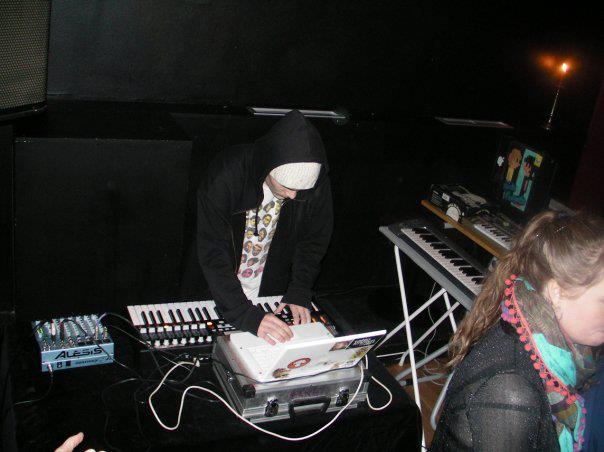
ThizOne
As a composer, live performer, and DJ, which came first?
I grew up with the hip-hop scene in Denmark in the ‘90s and always wanted to be a “battle DJ” doing routines, scratches, etc. After getting a turntable and mixer, instead of buying a second turntable, I decided to buy a sampler. And there was no turning back.
More than a decade later, I finally owned two turntables and a mixer, but by that time, my interest in being a “battle DJ” had dwindled, and my focus was all on music production instead.
What’s in your live setup?
I used to play my live sets with a MacBook running Ableton Live and a controller. Recently, I’ve been using a standalone sampler to play my live sets with audio clips/stems and various effects.
What’s your relationship with Roland gear?
I own a Roland JP-8080 synthesizer, and my relationship with Roland instruments runs deep. A lot of the music genres that I listen to would never exist if it weren’t for all the legendary synths and drum machines that Roland has produced throughout the years—notably the TR range of drum machines (606, 707, 808, 909) and course, the TB-303.
"The best compliment I can get is if people are dancing to my music, I feel like I have accomplished my goal. "
ThizOne
Are your live sets planned, improvised, or a mixture of both?
I spend a lot of time planning my sets. I have a certain amount of control, so I’m able to improvise as well. That way, no two live sets are the same.
How do your live performances and studio work compare?
They are not that similar at all. When producing tracks in the studio, I tend to record live jams with hardware equipment that I multitrack record into my computer. Some of the tracks I produce in the studio are more “live” than my actual live sets.
What are your ideal gear functions and features when performing live?
Reliability is a big factor for me when doing live shows, which is why I tend to plan them out thoroughly. But being able to manipulate prerecorded and pre-programmed sequences to make the sound like something new and different is ideal for me.
How does playing live make you feel?
My favorite part of playing live is seeing people’s reactions to the music I have produced. The best compliment I can get is if people are dancing to my music, I feel like I have accomplished my goal.
"We have a lot of great artists and creatives here in Iceland. Since the winters are long and dark, people have to find a hobby or something to do indoors, by themselves."
ThizOne

What is it about your environment in Iceland that affects your music?
I’m not sure what it is. We have a lot of great artists and creatives here in Iceland. Since the winters are long and dark, people have to find a hobby or something to do indoors by themselves. I think that’s the reason we have so many great, high-quality musicians, painters, writers, etc.
What makes a ThizOne performance unique?
ThizOne.
Futuregrapher
You are a producer, live performer, and label head (Moatún 7, Intellitronic Bubble, Neotantra, etc.) What came first for you, and how do they overlap?
I started making music when I was 13 years old. My first music release was at 14 years old using a workstation, sampler, and a DAW on my computer with software emulations of the classic Roland gear like the TB-303, TR-808, and TR-909.
What’s in your live setup?
It’s always changing. I try not to do the same thing twice because I try to perform my music and jam with it at the same time—so it’s always evolving. It could be only hardware, but if it’s a long show, it’s always computer-controlled with various kinds of hardware as well.
"I try not to do the same thing twice because I try to perform my music and jam with it at the same time—so it's always evolving."
Futuregrapher
What’s your relationship with Roland gear?
It’s been a good relationship for years. I use Roland Cloud in my productions and sometimes live. I have a lot of hardware from Roland—which I use all the time—classic gear like the D-50, MC-303, EF-303, D-110, JV-1080, and U-110. Those get used quite a lot. And my favorite drum machine is my TR-606.
Are your live sets planned, improvised, or a mixture of both?
It’s a mixture of both. I always have some parts planned but then I improvise on top of it, kind of like jazz.
How do your live performances and studio work compare?
The vibes are similar. If the vibe isn’t good, the performance will not be good. That’s just how it is for me so planning and staying mentally fit is essential.
What are your ideal gear functions and features when performing live?
Always have good cables, especially jacks and MIDI cables, because if they are not working, there will be no show.
How does playing live make you feel?
I was very active in playing live for ten years from 2008 to 2018, and during that time I had over 300 shows in many countries. It made me feel great. Now, I’m a full-time family man with fewer shows, but they are more special. The buzz is still there, and I sometimes get this invincible feeling.
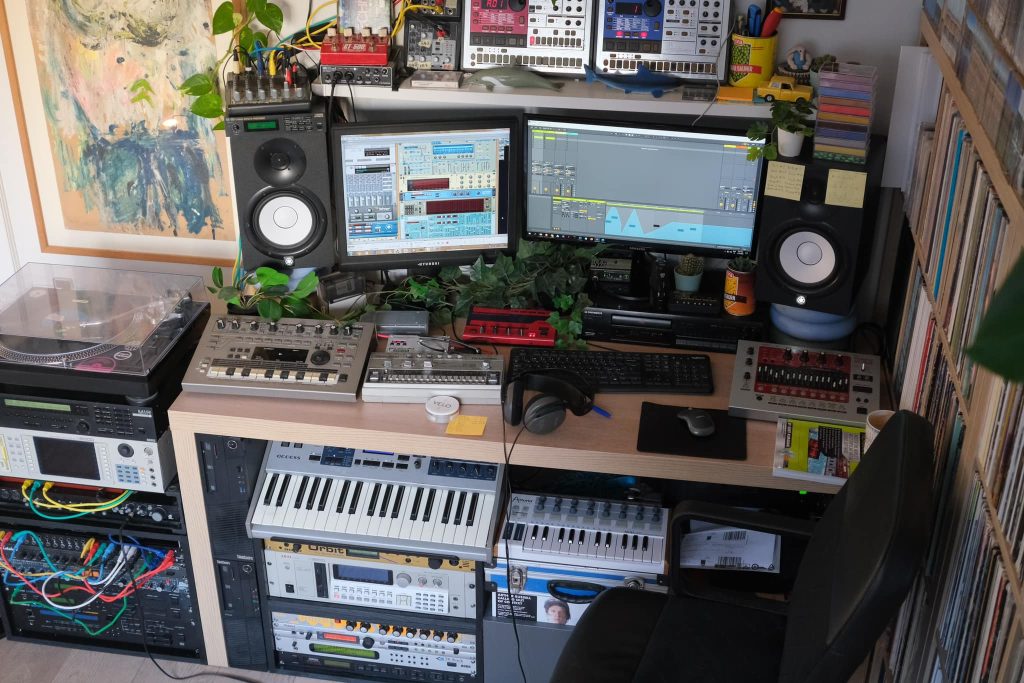
"Urban, nature—it all plays a big part in my music. Most of my artwork that goes with the music is affected by my environment."
Futuregrapher
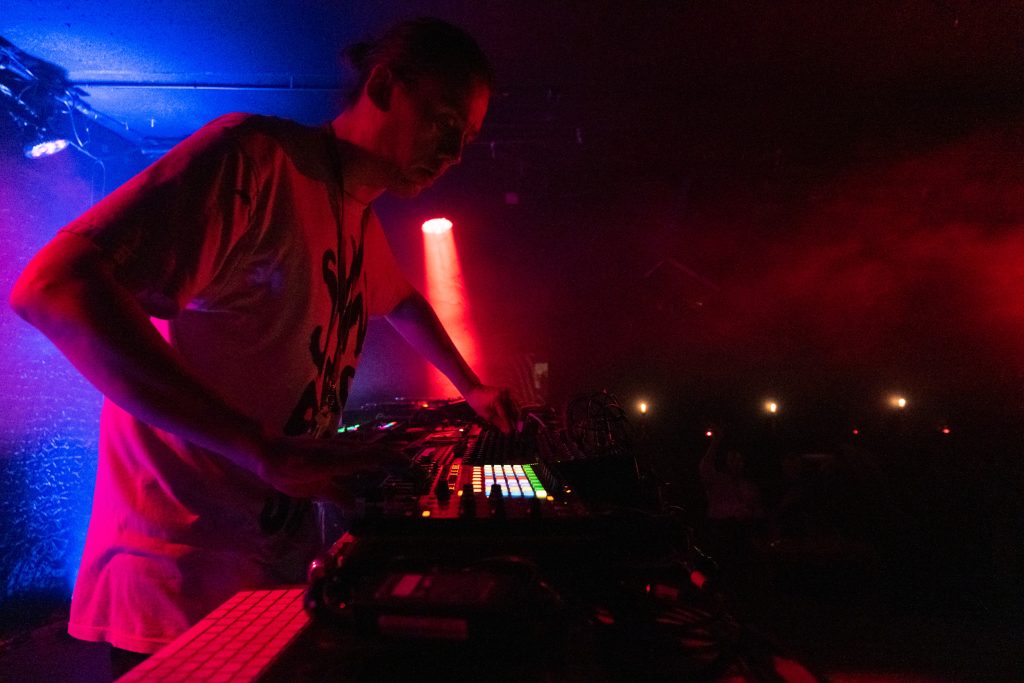
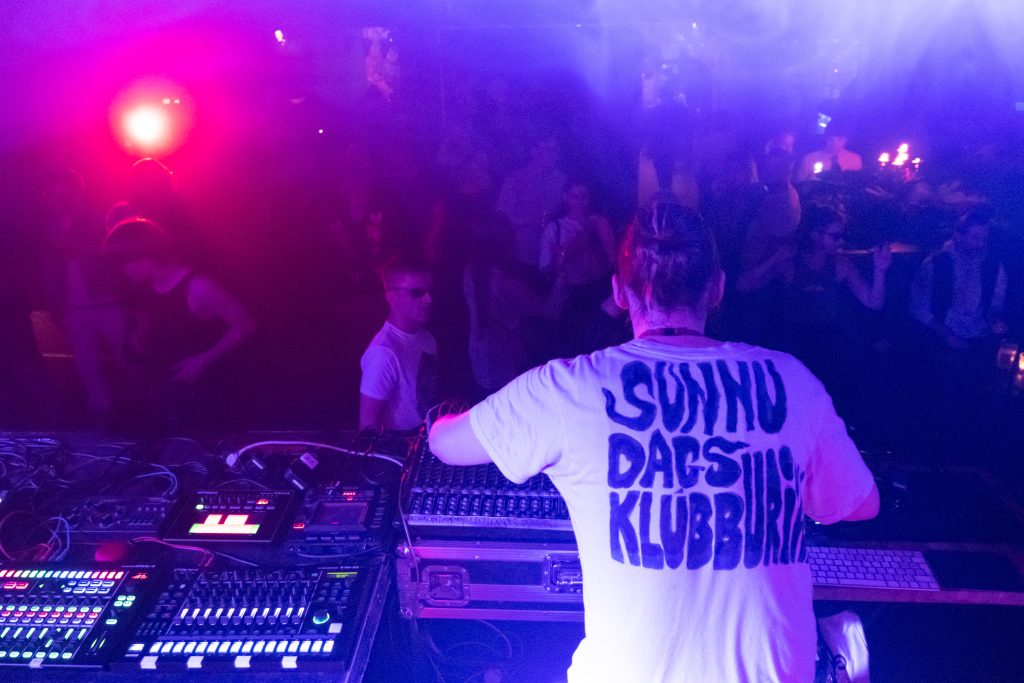
What is it about your environment in Iceland that affects your music?
Urban, nature—it all plays a big part in my music. Most of my artwork that goes with the music is affected by my environment. Field recordings are also a very big part of what I do.
What makes a Futuregrapher performance unique?
They’re a blend of acid, ambient, and techno, plus good vibes.
R/s/nn
As a composer, live performer, and DJ, which came first?
My father is a record collector, so music was always there—mostly classical and jazz, but all kinds of music. I started DJing and live performing around 13 years old. I played drums in a death metal band, created old-school hardcore on a sampler, and DJed parties.
After playing different instruments in indie bands and releasing a few albums, I started working alone more in the studio, commercially composing and producing stuff for others, along with DJing professionally.
I think composing, performing live, and DJing are just different facets of the same subject. Composing is creating something out of nothing. Performing live is my personal expression of that creation. And DJing uses already-produced music from multiple sources, manipulating them to create an extended sound collage.
What’s in your live setup?
I use a Mac mini and Ableton Live to run everything. While composing, I do a lot of sound design and experimenting with ambiance, multiple synths, and FX, so my recording sessions are usually 70+ tracks.
"Composing is creating something out of nothing. Performing live is my personal expression of that creation."
R/S/NN
For live performances, I break each song down into eight numbered stems. Then in a new session, I create eight tracks, import all the stems consecutively onto the timeline, break each one down into parts, and consolidate them into a new scene. Then I arrange those song parts in scene view for the performance itself.
What’s your relationship with Roland gear?
When I was around eight, my teenage uncle got a Roland JX-3P and a brand-new TR-707. Those kind of became my first instruments. I learned to program both, created some songs, and recorded them on cassettes. At 19, I got a JUPITER-4 for six months and fell in love. I still miss that thing. I had a JUNO-106 for ten years and made a lot of sounds and music on it—it’s a classic for a reason and one of my favorite synths.
Aside from multiple BOSS effect pedals, my only current piece of Roland gear is my most prized possession: a RE-301 Chorus Echo. I’ve’ had it for 15 years, and I use it on almost everything. Next, I’m planning on getting a TR-8S drum machine.
Are your live sets planned, improvised, or a mixture of both?
The framework is meticulously planned, so I can forget the tech and just have fun playing.
How do your live performances and studio work compare?
The studio work goes in phases, creative at times but mostly laborious and time-consuming. The live situation is completely different. There’s an audience responding to the music in real time. Everything is instantaneous, and there’s no stopping. Especially with dance music in a club, there are no breaks between songs, it’s continuous and people move.

"Everything is instantaneous, and there’s no stopping. Especially with dance music in a club, there are no breaks between songs, it's continuous and people move. "
R/S/NN
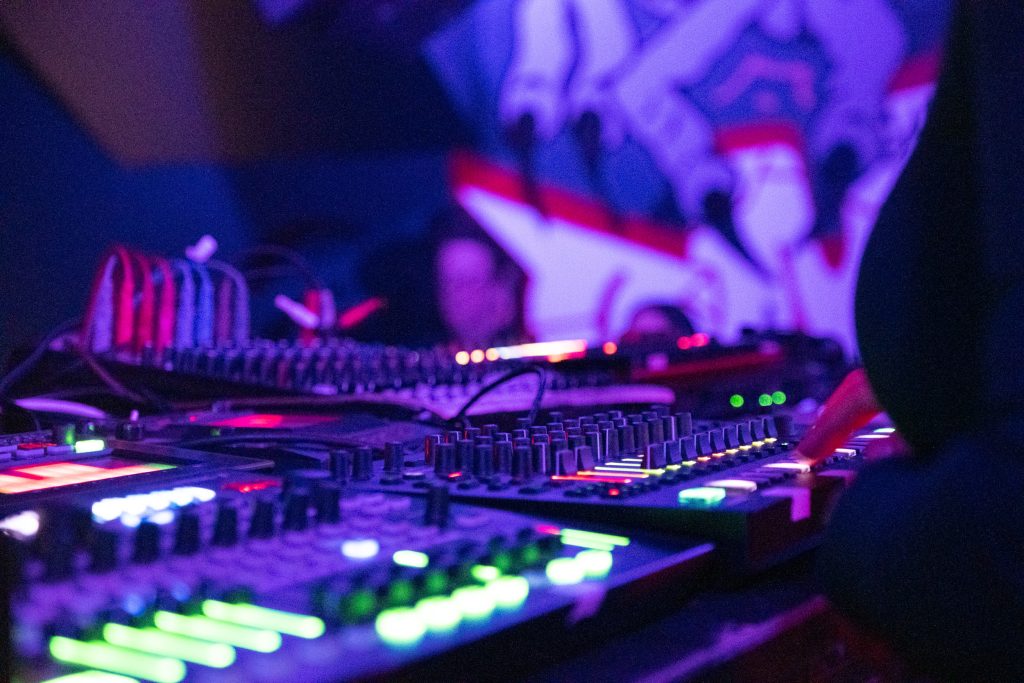
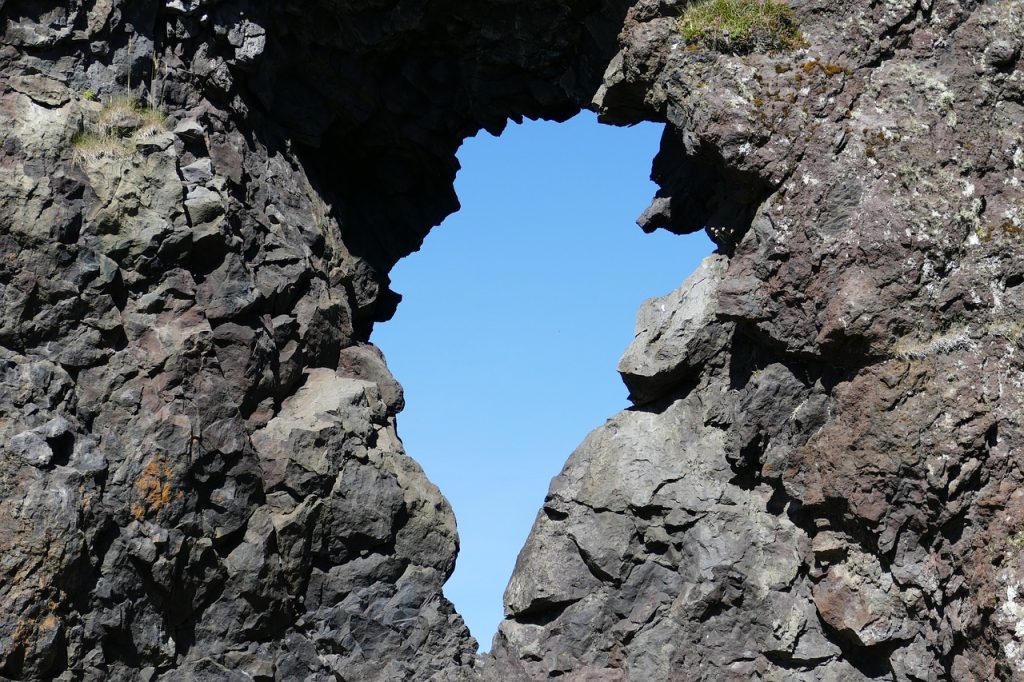
What are your ideal gear functions and features when performing live?
A clear physical user interface, control, and stability. Ideally, I’d like to get rid of the computer for live performances.
How does playing live make you feel?
Playing live is a rush. Every show and every room is different, so it’s a bit of a high-wire act, but I like it like that. It also externalizes things I’ve been assembling over a long time alone in a room. It’s weird and exhilarating—makes it real.
What is it about your environment in Iceland that affects your music?
I’d say the isolation and the weather. It can be quite dramatic and cold but also sometimes beautiful. The techno scene here is very good. That’s had an effect—good people playing good music.
What makes an r/s/nn performance unique?
The mood of the music and my form on the day. All the songs share a mutual sound that I call space techno. It’s cold and dark, ever-evolving, spacious, and dramatic, ranging from industrial brutality to ethereal ambient while still being danceable.
"I still emphasize doing concerts that are live jams throughout because it is so interesting and scary to not have any clue where the music will take you."
Andartak
Andartak
You are a composer, live performer, and label boss. What came first for you, and how do they overlap?
I started dabbling with music as a teenager, using the computer as my creative tool. In 2014, my brother, ThizOne, bought a drum machine and a bass synth that eventually fell into my hands, and from then on, I dove into creating music again but without a computer.
Today, my concerts are often a hybrid of prepared rhythms and melodic sequences with live jamming. I still emphasize doing concerts that are live jams throughout because it is so interesting and scary to not have any clue where the music will take you.
Describe your live setup and order of operations.
My setup is quite fluid and largely dependent upon the concert space and style of music I create. I keep it fairly compressed because I only have two hands, and now you can have boom-bastic-sounding instruments that fit into a backpack. The drum machine is the strongest color on my palette. It shapes the character of everything around it. My go-to drum machines are the Roland Boutique TR-08 for electronic and TR-09 for techno-based music, often run through effect pedals to create a more personal sound.
I also like to have a manual keyboard on my right-hand side like the JU-06 to add long sweeping atmospheric soundscapes. Recently, I have been experimenting with adding my voice to live performances, so I got the VT-4, which is a fantastic addition. It’s so playful and intuitive.
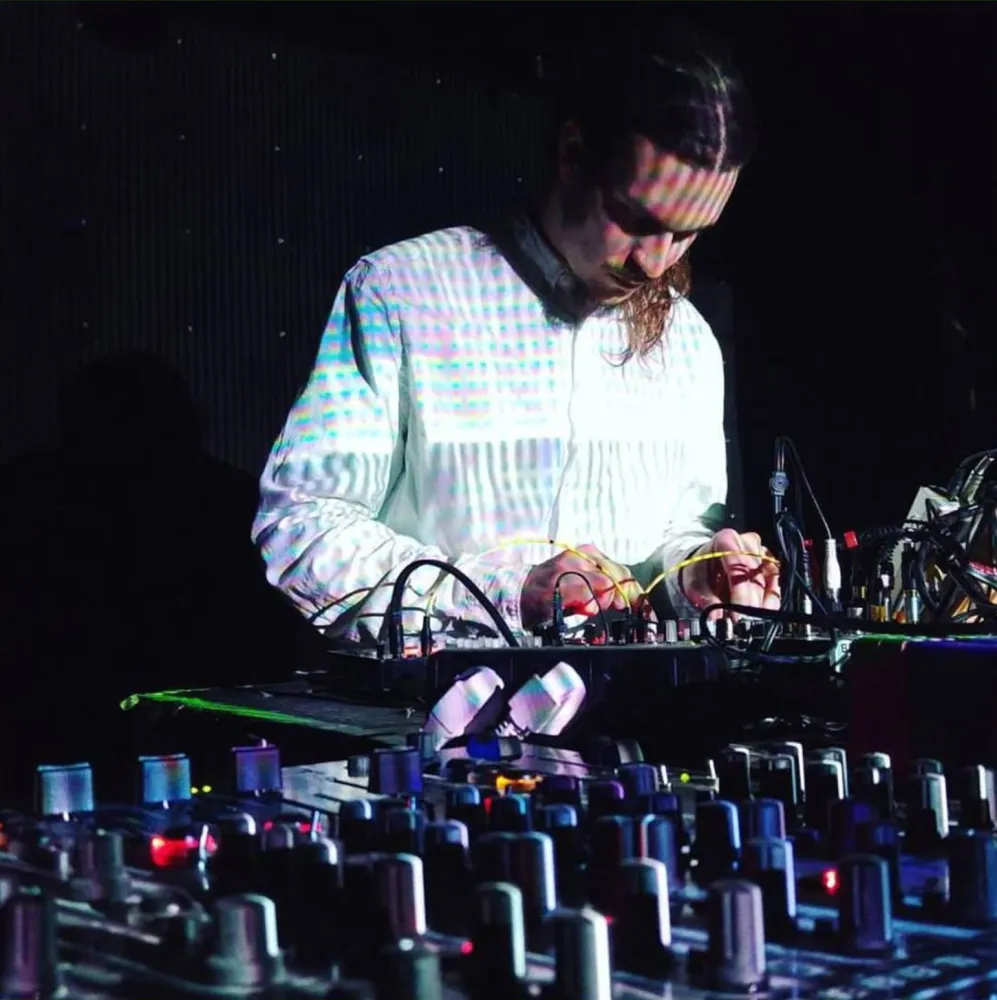
"The drum machine is the strongest color on my palette. It shapes the character of everything around it."
Andartak
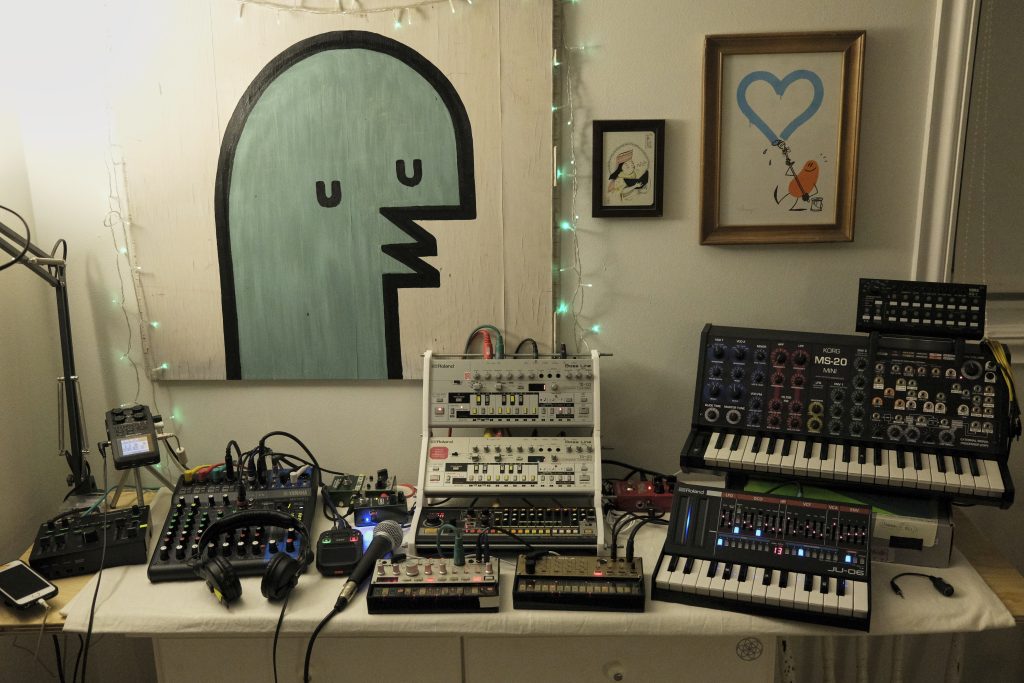

What is your relationship with Roland gear?
My first piece of Roland gear was the Boutique TB-03 I got when it was released in 2016. I have always had a sweet spot for that instrument, even before making my own music. I was so happy about the re-release. It took my performance to the next level. The soft, rounded squarewave-sound fitted perfectly with my simple setup at a time when most sounds were sharper and more expanded. I really like it when instruments are simple. It makes the creative process more inspiring to me.
Are your live sets planned, improvised, or a mixture of both?
When I started performing live, I was solely focused on all my live performances to be strictly free-flowing live jams. Now, sometimes I plan the rhythms, melodies, and track lists, but being DAW-less, the flow of the music and fine-tuning of the knobs will always be unique to each concert.
That is partly where my artist name was born. Andartak is an Icelandic word that has layers of meaning to it. One is “a moment in time,” which corresponds to experiencing my live performances. It will never sound the same, and you may never hear the same song or movement again. Another meaning is, “One whole breath, in and out.” This is related to my daily practice of meditation, which has influenced my senses.
If we divide the word into two parts, we get “Andar” and “tak” the first part meaning “of spirit” and the latter “to take or grasp.” All these elements are related to my music, so it was a seamless name for me.
How do your live performances and studio work compare?
I practice doing live jams in the studio. It’s a way to keep things alive and fun, allowing for experimentation and learning new tricks or understanding the instruments better. And it keeps me in shape if a quick concert opportunity should arise. I also make sure to record every time. I have come to understand that my tracks often serve as an expression of a certain individual or experience. That’s one of the many beauties of being an artist. You paint the moment for the future to reflect upon.
"I have come to understand that my tracks often serve as an expression of a certain individual or experience. That’s one of the many beauties of being an artist."
Andartak
What are your ideal gear functions and features when performing live?
I love instruments that look beautiful, are straightforward, and are hands-on. No menu diving for me, thank you. This is a big part of why I pushed the computer aside from the get-go. I know the place, feel, shape, and size of the buttons on my instruments as well as their positions on the table. I can almost move about blindly, which is often the case, playing in dark clubs and spaces. This way everything becomes so much more intuitive and fun.
How does playing live make you feel?
There are many different experiences to be had while performing live. But my main goal is to become a sort of shaman, going through a variety of emotional spaces, vibing with strong, positive energy, and aiming for everyone present to experience a unified source.
What makes an Andartak performance unique?
Using instruments with short sequence capabilities and repeating short note patterns with delays and reverbs, allows the audience to fall into trance. I provide a certain meditative flow state that people can step in and out of as they want. I am not just a musician performing my art, but there is something more happening—something of real spiritual value. That is where I find my purpose to continue this adventure.
What is it about your environment here in Iceland that affects your music?
I think Iceland has so much creativity boiling behind the curtain because of the long and dark winters. People spend much more time indoors, and to keep sane, we find activities that spark some sort of reason to be alive. The long winters spanning most months of the year and the uncertainty of having a good summer or not make it a crazy country. But there is an immeasurable amount of magic just around the corner if you step outside your home and are open to it. And I guess that’s why we stay.
